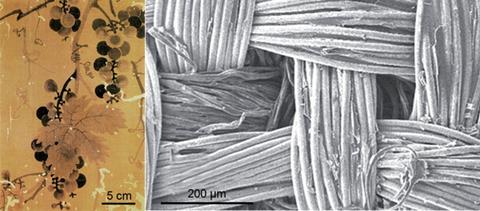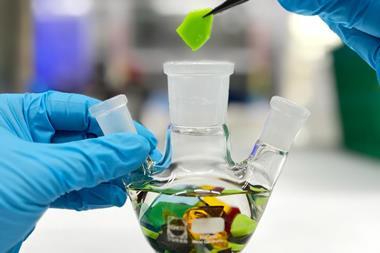Ancient art behind electronic textiles you can wash
Wearable electronics have an array of potential uses from fashion to monitoring health, but washing them is far from straightforward. This prompted scientists in South Korea to return to a millennia old drawing board, where they discovered that calligraphy ink might solve the problem.

Traditional calligraphy ink consists of ground soot or charcoal and animal derived binders, so is essentially carbon nanoparticles coated with collagen. According to a Korean proverb, ‘The colour of calligraphy ink does not change over a few thousand years.’ This is because the aqueous suspension can penetrate fibres in paper, cotton or silk, and when dry the collagen forms chemical bonds that glue the black nanoparticles in place.
Seung-Mo Lee and his colleagues from the Korea Institute of Machinery and Materials have exploited these bonds and coated electrically conductive silver blended cotton fibres with ordinary calligraphy ink, to give a working textile anode for a supercapacitor. Thanks to the ink’s durability, they laundered the fabric 10 times in a washing machine without any noticeable degradation in performance. Subjecting it to 2000 folding cycles had no affect either, demonstrating that wearable yet washable electronics might be closer than you think.
References
This article is free to access until 15 April 2016
D V Lam et al, J. Mater. Chem. A, 2016, DOI: 10.1039/c6ta01341d












No comments yet